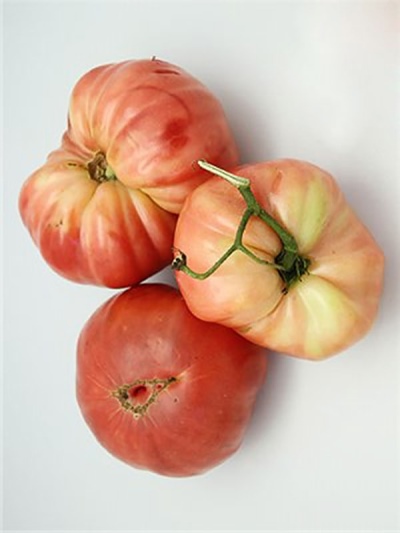
- Authors: Dederko V.N., Postnikova O.V.
- Year of approval: 2007
- Name synonyms: Tsar's Royal Gift
- Category: grade
- Growth type: determinant
- Appointment: fresh consumption, for pickling and preserving
- Ripening period: mid-season
- Ripening time, days: 110-115
- Growing conditions: for open ground, for film greenhouses
- Transportability: high
Tomatoes produced by Russian breeders can be really good. But each of the most attractive varieties should be studied deeply and comprehensively. This is the only way to achieve success when handling the Tsar's gift.
Breeding history
This culture was created by the joint efforts of renowned breeders Postnikova and Dederko. She was registered in the State Register in 2007.
Description of the variety
He has an official synonym for sales abroad - Tsars Royal Gift. This culture demonstrates classic determinant development. The bushes reach a height of no more than 1 m, which is very convenient for planting in greenhouses and in a limited area. Despite the limited height, the plants are quite sturdy. They are covered with medium-sized dark green foliage.
The main qualities of the fruit
Unripe berries of the Tsar's gift are characterized by a light green color. When they gain the necessary vegetative conditions, they acquire a pink color. Large flat-round tomatoes weigh on average 225 g. They will form on simple inflorescences. An important characteristic feature is the articulation of the peduncles.
Taste characteristics
The harvested crop is often eaten fresh. It is quite suitable for canning. The pulp inside the fruit is dense. The sugar content in them is quite high. Therefore, there is no doubt about a pleasant sweetish aftertaste.
Ripening and fruiting
The royal gift is presented during July and August. It is generally accepted that this is a mid-season variety. Usually, to reach maturity, its harvest needs 110-115 days (counting from the discarding of the green growth).
Yield
In terms of productivity, the Tsar's gift is good and fully justifies its name. The collection can reach 8.8 kg per 1 sq. m. What is important, the harvested berries are easy to transport, which means they can be used for commercial purposes.
The timing of planting seedlings and planting in the ground
They usually start planting seeds in containers in March. But in some cases, especially in cold regions, it is not too late to do this in April. Seedlings are planted in May or June. Most often, it is timed to 50-60 days after sowing. However, it is necessary to take into account all the same factors that are usually paid attention to - the weather and planting care, the condition of the plants.

Growing tomato seedlings is an extremely important process, because it largely depends on whether the gardener will be able to harvest at all. All aspects must be taken into account, from seedbed preparation to planting in the ground.
Landing scheme
The largest number of bushes per 1 sq. m - 4 pieces. But you can limit yourself to 3 plants, if there is a desire to simplify the work and reduce mutual interference. There should be a gap of 50-60 cm between the holes. The row spacing should be kept at the level of 60-70 cm.

Growing and care
It is highly recommended to sterilize not only the seeds and soil, but also the containers or boxes used before sowing for seedlings. Seedlings of the Tsar's gift do not require particularly active watering. But it must still be conducted with clear regularity. After the appearance of 2 or 3 leaves, the plants dive. At the same time, you should not pinch the central root.
Seedlings must be fed three times. For this purpose, proven fertilizer complexes are used. Quenching is carried out in the last 14 days before transshipment to the final location. It is better to prepare beds for seedlings even in the fall. The soil must be dug up and disinfected in the spring.
In the process of growing adult bushes of the Tsar's gift, foliar dressing is used. After the plants have strengthened, the side shoots should be removed so that one stem remains. To avoid too many ovaries with a small number of fruits, it is recommended to use dressings. Limiting the amount of water helps to avoid cracking the berries.




A plant needs different micronutrients at each stage of growth. All fertilizers can be divided into two groups: mineral and organic. Folk remedies are often used: iodine, yeast, bird droppings, eggshells.
It is important to observe the rate and period of feeding. This also applies to folk remedies and organic fertilizers.


Growing regions
It is allowed to plant such a tomato in all the main areas of Russia:
in the Urals;
in Western Siberia;
in the Far East;
in the Volga basin;
in the middle lane and other areas of the European part;
in the North Caucasus.
Review overview
Many people like the royal gift right away when trying to grow this culture. The promised taste is also fully confirmed. When grown for several years, it will be possible to find many attractive nuances that allow you to achieve a good result. In their reports, farmers indicate that the worsening weather for this variety is not too bad.However, it is still advisable to take into account the meteorological conditions when transplanting into open ground and when hardening seedlings.

























































































